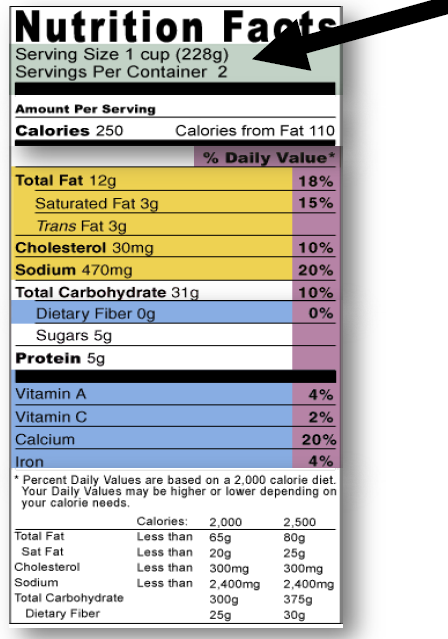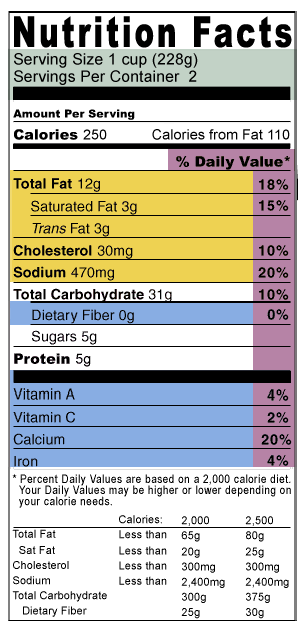Grocery Shopping Tips
Do you love to eat but hate grocery shopping? With Amazon Fresh, Whole Foods delivery, and many more food delivery services, you don’t even have to leave the comfort of your own home to go food shopping.
I am one of the few who still loves to brave the grocery store and pick out my items. I love browsing the aisles in search of new and trending products, analyzing the labels, and picking my own fresh fruits and veggies. It’s an experience for me! Some days I treasure the experience more than others, like if I have a cranky toddler in tow, perhaps then I’m wishing I did the Amazon Fresh delivery that week instead!
Here are 5 tips to make the most of your next grocery trip!
1) Make a List
The one thing I highly recommend is to go prepared to the grocery store. Make a list ahead of time and STICK TO THE LIST! Easier said than done, and I must admit I tend to deviate and add 1 or 2 extra items to my cart, but for the most part, I do my best to game plan and stick to my list.
Take 10 minutes out of your day to map out and plan 2-3 meals you are going to make for the week and ensure your list includes those items. Think of recipes that you can get multiple days of meals out of or repurpose into a fresh dish the next night. This will maximize your grocery store purchases and also be very kind to your wallet.
Also, avoid going shopping on an empty stomach! I am guilty of this many times and typically end up opening a bag of chips and eating them while I shop. I also end up spending way more money on super random things that I typically can’t put together for anything practical.
Have your list and a happy tummy before you hit the grocery store :)
2) Shop the Perimeter
I’m sure you have heard this before about a grocery store layout, but beware some grocery stores are starting to put processed foods around the perimeter, too.
The perimeter of the grocery store is where most of the one-ingredient foods are located (produce, meat, dairy, seafood, etc.). While shopping, this is where you will want to get most of your food from.
I try to buy some shelf-stable fruits like apples, pears, oranges that last a bit longer than perishable fruits like berries which I might only buy one container. I like to buy 2-3 fresh vegetables for the week that I roast in a big batch to keep in the fridge for quick side dishes, mix into warm salads for lunch, or omelets for breakfast.
You can also find fresh and frozen meats and seafood. Try to look for sales ahead of time (when you are making your grocery list) and plan out meals for the week using proteins that are on sale. For example, if a roasting chicken is on sale I’ll buy that to make a crockpot dinner one night, use the leftover chicken a second night for tacos, and make a chicken soup on a third night with the remainder of the meat.
Foods located around the perimeter are better for your body because they have not been changed from their original form! You get to be the creator and make what you want with these delicious items.
3) The Center Aisles and Making Healthy Choices
While some of my most favorite snacks are found in the center aisles, there are also plenty of healthy choices to be found.
Most of your shelf-stable grains, rice, beans, pasta, flours, and more can be found in the center aisles. Like I mentioned here, there are lots of “better grain” options to be found, ones packed with protein and fiber.
Take time while creating your grocery list to scan the online weekly flyer for the grocery store where you are shopping to look for sales. For example, if the chicken broth is 5 for $5 this week, stock up and then plan some crockpot meals that use chicken broth like chili and soup, or to flavor rice or quinoa.
It always helps to have shelf-stable items in the pantry for quick weeknight dinners. Think, of jarred sauce, salsa, dried beans, and many other healthy staples to keep on hand. You can read more here to learn about meal prep hacks to save you time.
I also encourage you to buy 1 or 2 of your favorite snacks or desserts to keep handy. Sometimes just knowing you have them there helps you to avoid going on an all out binge. You know it’s there and accessible for when you need it!
4) Learn How to Read a Nutrition Facts Food Label
It’s good to get into the habit of reading food labels to help you make mindful choices when purchasing products. For example, you might see a new snack on sale that looks “healthy” but when you turn it over and read the label you find it contains a day’s worth of sodium in one serving! This may drive your decision to either purchase or pass on the item.
Serving Size
Be mindful of the serving size. Don’t ever assume something is one serving. It’s good to check the label. Remember, this is just a guide and does not mean you must only have one serving, but this is what all of the information on the label (calories, fat, sodium, etc.) is calculated using.
% Daily Value
Note - the % Daily Value column on a nutrition fact label (highlighted in purple in the image) is based on a 2,000 calorie per day diet.
Instead, follow the “5-20 Rule” and look for products containing 5% or less daily value of sodium and 20% or more daily value of vitamins, minerals, and fiber.
5% daily value is considered low, while 20% or more is considered high.
5) Ingredients Matter
For the most part, try to look for products that contain five ingredients or less. When you see a laundry list of ingredients, that’s a red flag that the item is highly processed and may contain some rather unfavorable or synthetic ingredients. While there is a time and a place for all foods, I also believe it is best to fill your diet with foods that nourish you and give that nutrient-dense slam dunk. Think foods like the ones contained in this recipe.
Ingredients are listed in descending order on the nutrition facts label and whatever is listed first will be in the greatest amount in the product. For example, if sugar is the first ingredient, this means the product contains mainly sugar.
These are some ingredients that I choose to avoid, but again, that doesn’t mean I won’t occasionally indulge in a product containing one of these ingredients, but I choose not to make these staple items. It’s all about balance!
High fructose corn syrup (HFCS), sugar or alternative sugars, and artificial sweeteners
Partially hydrogenated anything
Artificial anything, but usually flavorings
Artificial colors, the most used are Red #40 and Blue #2 (linked to brain tumors and hyperactivity)
Preservatives such as BHT and TBHQ and sodium benzoate (which causes hyperactivity in children)
Caramel color – some forms are considered a carcinogen
Carrageenan – used to thicken foods, some forms are a carcinogen
Propylene Glycol – also used in anti-freeze!
Happy Shopping!


